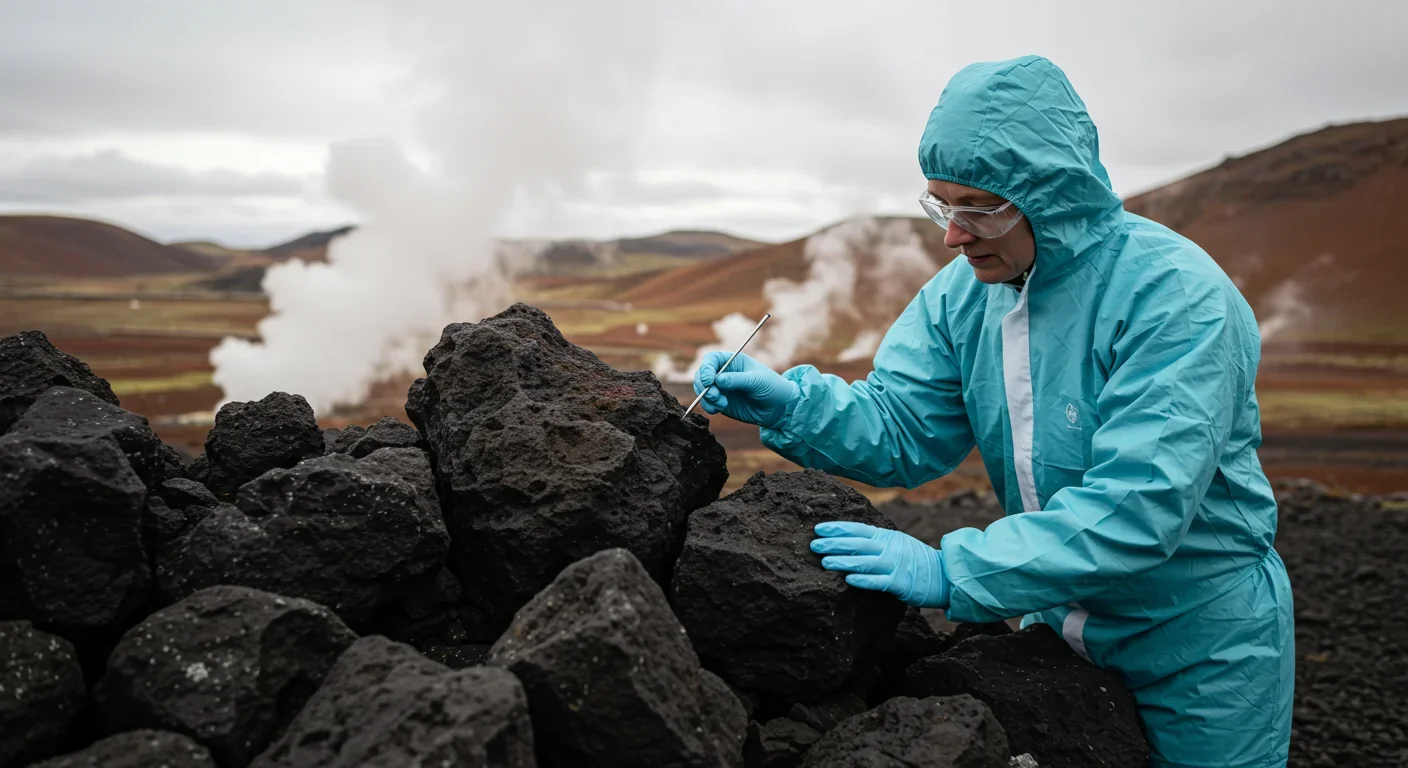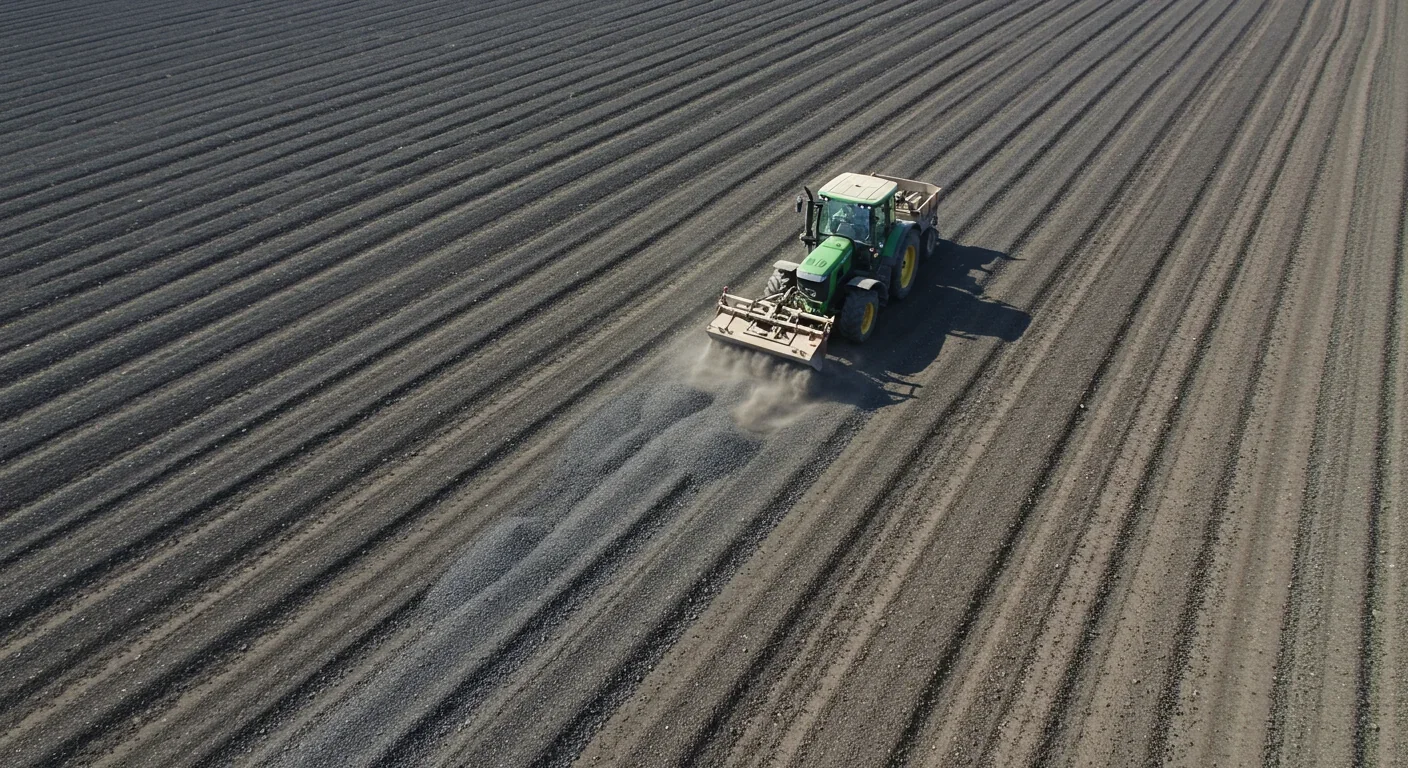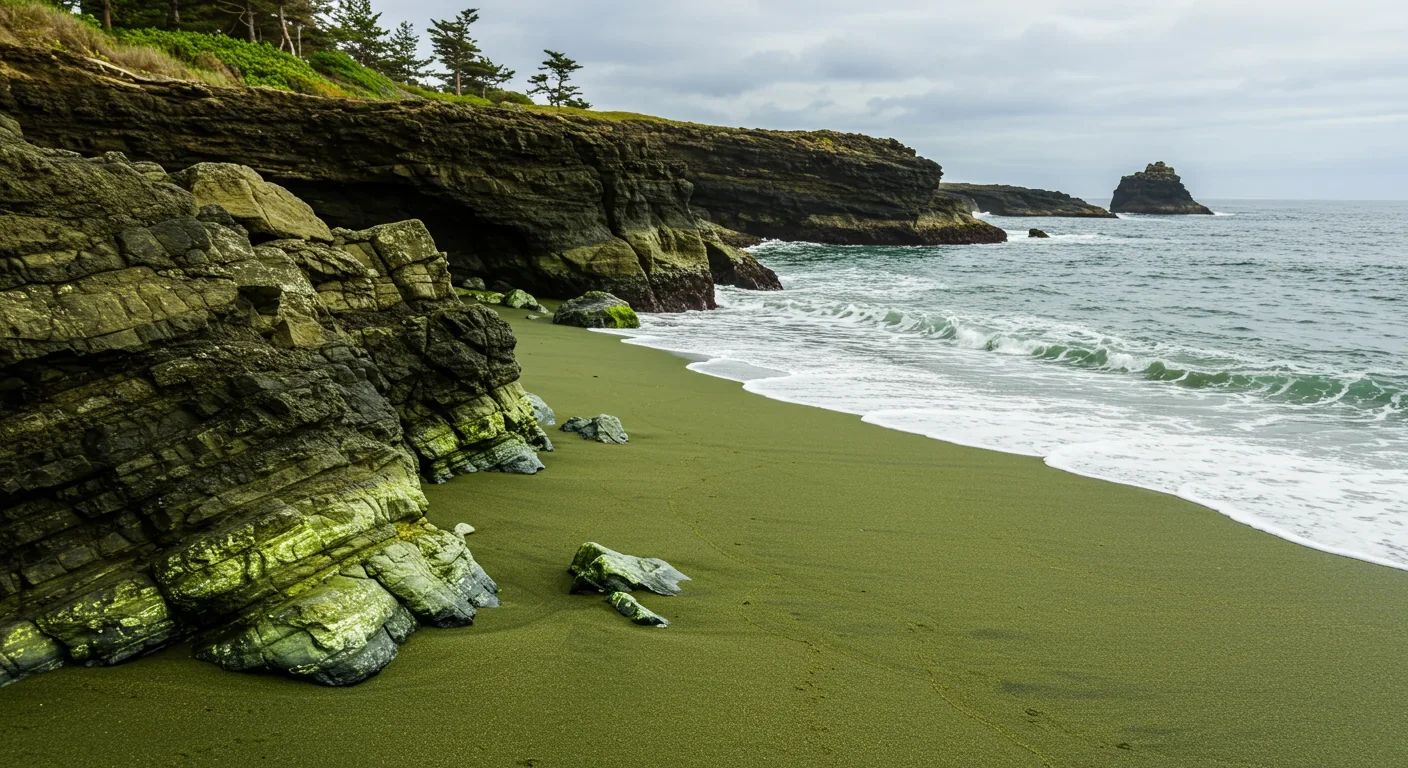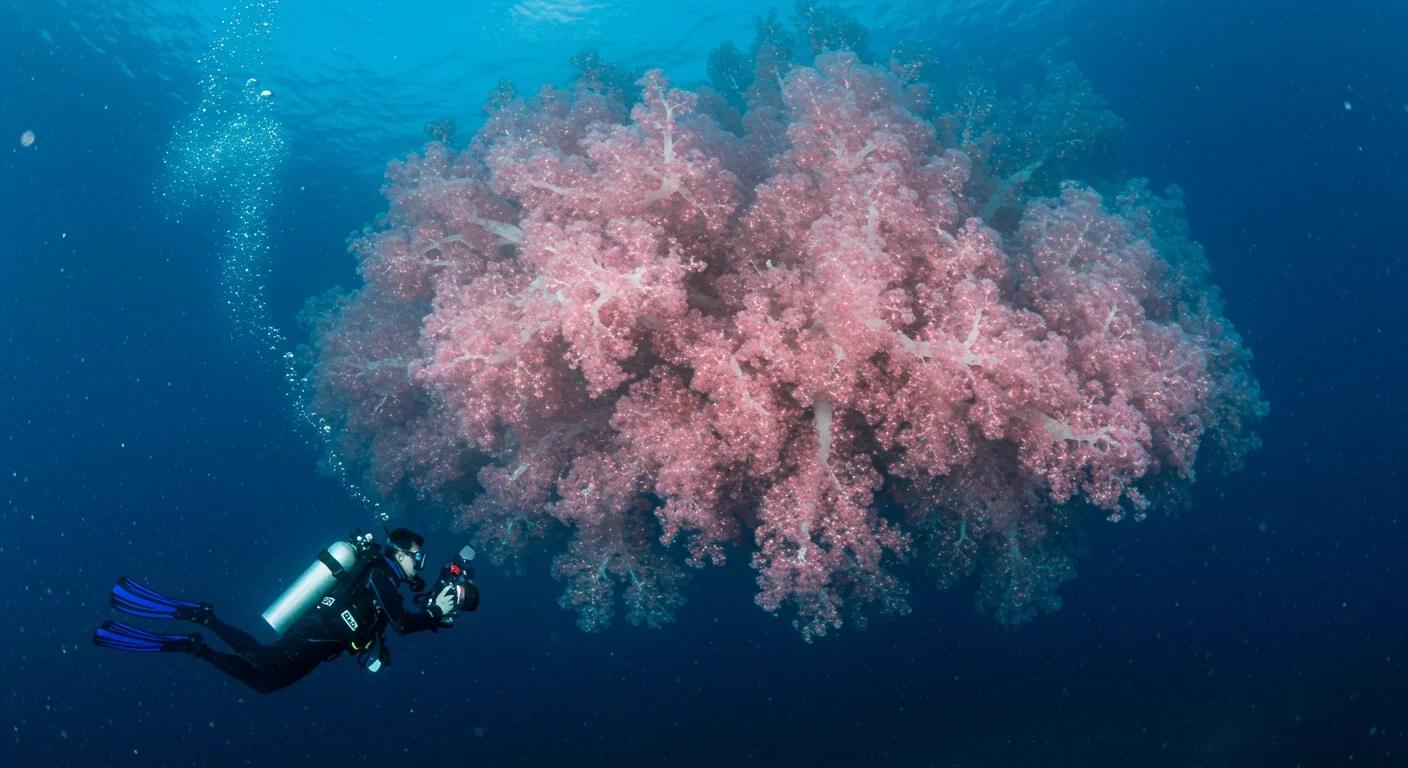Digital Pollution Tax: Can It Save Data Centers?

TL;DR: Volcanic weathering—accelerating the natural process where CO₂ reacts with basalt and olivine to form stable carbonate minerals—could remove 1-2 gigatons of CO₂ annually by 2050. Iceland's CarbFix project already mineralizes 95% of captured CO₂ into rock within two years at costs as low as $30/ton, while agricultural applications in the UK and Brazil demonstrate dual benefits of carbon capture and improved crop yields. Though challenges remain—trace metal contamination, transport costs, and methane production—pilot projects worldwide prove this ancient geological process can be accelerated from millennia to decades, offering permanent carbon storage for over 100,000 years.

Deep beneath Iceland's Hellisheiði geothermal plant, something remarkable is happening. Carbon dioxide—the very gas warming our planet—is being transformed into solid rock. Not in millions of years, as nature intended, but in less than two.
This isn't science fiction. It's volcanic weathering, and it might be the most elegant climate solution you've never heard of. While politicians debate policy and activists protest pipelines, scientists are quietly harnessing Earth's ancient geological processes to lock carbon away forever. The method mimics what volcanoes have been doing for billions of years: using mineral-rich basalt and olivine to capture CO₂ and convert it into stable carbonate minerals.
The stakes couldn't be higher. By 2050, we need to remove 10 billion tonnes of CO₂ annually just to prevent runaway climate change. Current technologies—from tree planting to direct air capture—can't scale fast enough. But volcanic weathering operates on a different timeline entirely. Where forests take decades and might burn, mineralized carbon stays locked in stone for over 100,000 years.
What makes this approach so powerful is its dual nature: it's both ancient and cutting-edge. The carbonate-silicate cycle has regulated Earth's temperature for 4 billion years, slowly converting atmospheric CO₂ into limestone at the ocean floor. Now, by crushing volcanic rocks and spreading them strategically, we can accelerate this natural thermostat from geological time to human time.
Volcanic weathering works through surprisingly simple chemistry. When rainwater absorbs CO₂ from the atmosphere, it forms weak carbonic acid. This acid then reacts with calcium and magnesium silicate minerals in volcanic rocks—particularly basalt and olivine—releasing metal ions. The reaction looks like this:
CaSiO₃ (wollastonite) + 2CO₂ + 2H₂O → Ca²⁺ + 2HCO₃⁻ + SiO₂
Those bicarbonate ions travel through rivers to the ocean, where marine organisms use them to build calcium carbonate shells. When these creatures die, their shells sink and lithify into limestone, permanently sequestering the carbon. Every ton of basalt that fully weathers can capture approximately 0.4 tons of CO₂.
The magic lies in the minerals themselves. Basalt—formed from cooling lava—contains plagioclase feldspar and pyroxene that weather rapidly compared to other rocks. Olivine, the greenish mineral that makes up much of Earth's mantle, dissolves even faster. In natural seawater, forsterite (magnesium-rich olivine) can dissolve at rates up to 0.13 millimeters per year. That might sound slow, but it's lightning-fast in geological terms.
Mafic and ultramafic rocks are particularly effective because they're rich in calcium, magnesium, and iron but low in silica. This composition means they readily react with CO₂. Ultramafic rocks contain over 18% magnesium oxide and less than 45% silica—perfect for carbon mineralization. Large igneous provinces like India's Deccan Traps and the Columbia River Basalt Group contain vast reserves of these materials, with the Columbia River formation alone capable of storing 10 to 100 gigatons of CO₂ according to the US Geological Survey.
The process offers something no other carbon removal technology can match: thermodynamic permanence. Once CO₂ becomes calcite, dolomite, or magnesite, it's stable for millions of years. There's no risk of forest fires releasing it back, no concerns about ocean saturation, no leakage from underground reservoirs. The carbon literally becomes rock.
Temperature matters too. The optimal conditions for subsurface carbon mineralization occur between 25°C and 260°C—a range that includes both surface agricultural soils and deep geothermal reservoirs. This flexibility allows volcanic weathering to be deployed across diverse environments, from tropical farmland to volcanic bedrock.
At the Hellisheiði Power Station, 30 kilometers from Reykjavik, the future of carbon storage is already operational. The CarbFix project has been running since 2014, capturing CO₂ from geothermal steam, dissolving it in water, and injecting the carbonated water 700 meters underground into basalt formations. Within two years, over 95% of that CO₂ has mineralized into solid carbonate.
The numbers are impressive. CarbFix originally injected about 12,000 tonnes of CO₂ annually. The newer Silverstone project has scaled that to 34,000 tonnes per year, with projections to reach 500,000 tonnes. Over the project's lifetime, emissions will be reduced by 150,000 tonnes. "The process mimics and accelerates natural processes that regulate atmospheric CO₂," explains Dr. Sandra Ósk Snaebjörnsdóttir of CarbFix. "It transforms emissions into stable carbonate minerals underground, permanently storing them in basaltic rock."
What makes CarbFix economically viable is its integration with existing geothermal infrastructure. Iceland's abundant geothermal energy provides the low-cost electricity needed to power direct air capture units like Climeworks' facilities. The Mammoth plant, powered by Hellisheiði's geothermal energy, captures 36,000 metric tons of CO₂ annually using 12 containers of amine compounds that bind CO₂ from filtered air. Each container captures roughly 600 kilograms per hour.
The storage capacity is essentially unlimited. "The basalt underneath the Climeworks plant is unlimited," says Ólafur Elínarson, Carbfix's head of communications. Iceland sits on the Mid-Atlantic Ridge, where volcanic activity continuously produces fresh basalt. The country's geology creates a perfect synergy: volcanic heat generates clean electricity, which captures CO₂, which then mineralizes in the same volcanic rock that produced the heat. It's a closed-loop system that generates energy while permanently storing carbon.
CarbFix has also demonstrated versatility beyond CO₂. The CarbFix2 project achieved 76% sulfur mineralization alongside carbon sequestration in just 4 to 9 months. This matters because geothermal plants and industrial facilities often emit both gases, and capturing sulfur compounds prevents acid rain while removing carbon.
The European Union has taken notice, awarding CarbFix and ON Power a €3.9 million grant from the EU Innovation Fund. That policy support reflects recognition that mineralization offers something rare in climate technology: proven, scalable, permanent carbon storage without ongoing monitoring costs or leakage risks.
Here's where volcanic weathering gets really interesting economically: much of the material is already a byproduct. When quarries blast and crush basalt for construction aggregate, about 15% ends up as fine dust—roughly 10 million tons per year in the United States alone. This "waste" material is perfectly sized for enhanced weathering, with high surface area that accelerates dissolution.
The cost differential is dramatic. Mining and processing fresh ultramafic rock for ex-situ mineralization runs about $600 per ton of CO₂ captured. But using existing waste rock drops that to around $50 per ton. For in-situ mineralization in ideal locations like Iceland—with abundant basalt, geothermal energy, and groundwater—costs fall as low as $30 per ton of CO₂. Compare that to direct air capture, which currently costs $600 per ton and aims to reach $200 by 2050.

UNDO Carbon, a UK-based company, demonstrates the agricultural pathway. In 2023, UNDO spread 141,000 metric tons of crushed basalt across UK farms, which should draw down about 37,000 metric tons of CO₂ over time as it weathers. The company doesn't need additional mining energy—it sources existing aggregate industry byproducts. By spreading basalt locally using existing farm machinery, UNDO achieves 95% carbon efficiency, meaning only 5% of the captured carbon is offset by operational emissions.
The economics improve further when you account for co-benefits. Basalt contains calcium, magnesium, potassium, and trace elements that act as natural fertilizers. Studies show that basalt application increases crop yields, reduces soil acidity, and can replace lime amendments. InPlanet's 2023 sugarcane trials in São Paulo state documented measurable increases in plant height, cane girth, single cane weight, and millable canes eleven months after basalt application. The soil health benefits—increased macro and micronutrient content—provide value that offsets application costs.
Wollastonite, a calcium silicate mineral, weathers even faster than basalt. After spreading on agricultural land, 50% weathers within just 12 months. That rapid dissolution means faster carbon removal and quicker turnover for farmers participating in carbon credit programs.
But there's a catch: transport costs. Basalt is heavy and widely distributed. Moving crushed rock long distances by truck is energy-intensive and expensive. That's why successful projects tend to co-locate sources and sinks. In Brazil, InPlanet partners with sugarcane farms near basalt deposits. In the UK, UNDO works with quarries and farms in close proximity. The logistical constraint means volcanic weathering works best as a distributed solution rather than centralized mega-projects.
The societal implications of volcanic weathering extend far beyond climate metrics. This technology sits at the intersection of agriculture, industry, energy, and environmental policy—potentially reshaping how we think about economic development itself.
Consider the employment dimension. Basalt mining, processing, and distribution for enhanced weathering could generate thousands of jobs in rural areas where aggregate quarries and farms are located. Unlike fossil fuel extraction, which concentrates wealth in specific regions, volcanic weathering can be deployed wherever suitable rocks and land exist. The US, China, India, and Brazil—four of the world's largest emitters—all have vast agricultural lands and significant basalt deposits, creating domestic carbon removal capacity.
But this also raises uncomfortable questions about land use and power. Who decides where crushed rock gets spread? If carbon credit prices rise high enough, could enhanced weathering compete with food production for farmland access? Currently, carbon credits from enhanced rock weathering sell for $300 to $600 per ton of CO₂—far above many other negative emission technologies. That price signals strong demand but also creates incentives that might conflict with agricultural priorities.
The policy landscape is still forming. The US government's Inflation Reduction Act includes funding for carbon removal research, including grants like the $1.9 million NOAA awarded for olivine weathering trials in tidal wetlands. Such public investment helps de-risk early-stage projects, but it also means taxpayers are subsidizing what could become highly profitable private ventures. Should carbon removal be treated as a public good like clean water, or a market commodity like corn?
From a cultural perspective, volcanic weathering represents a fundamentally different relationship with the Earth than fossil fuel extraction. Instead of taking from the ground (oil, coal, gas) and releasing it to the atmosphere, we're taking from the atmosphere (CO₂) and returning it to the ground (as carbonate rock). It's extraction in reverse—a form of geological healing.
Yet there's a troubling parallel to past technological optimism. In the 20th century, chemical fertilizers promised to end hunger but led to dead zones in oceans. Nuclear power promised unlimited clean energy but left radioactive waste. Could large-scale rock weathering have unintended consequences we haven't foreseen?
The methane problem offers a cautionary tale. Recent research found that basalt weathering can inadvertently promote methanogenesis—the production of methane by microorganisms. Trace metals released during weathering (iron, nickel, cobalt) enhance the activity of methane-producing archaea. Since methane is a potent greenhouse gas, this could partially offset CO₂ removal benefits. The effect appears modest based on laboratory studies, but at scale, even small percentages matter.
The theoretical potential of volcanic weathering is staggering. Project Vesta calculates that spreading olivine across just 0.25% of the world's continental shelf seas could remove 1 billion tonnes of CO₂ annually by 2032. That's roughly 3% of current global emissions—from a quarter of one percent of seafloor.
A 2025 study published in Nature found that implementing enhanced weathering on US agricultural soils could remove 160 to 300 million metric tons of CO₂ annually by 2050, rising to 250 to 490 million tons by 2070. That represents 16% to 30% of the United States' required carbon removal to meet net-zero targets. Professor David Beerling, lead author, stated: "What we're proposing could offer a genuine step-change in how the U.S. captures carbon to meet its increasingly urgent net zero target."
Global estimates are even more ambitious. Climate scientist Zeke Hausfather estimates that at full scale, enhanced weathering could remove 1 to 2 gigatons of CO₂ per year worldwide. Lawrence Livermore National Laboratory's 2017 Carbon Mineralization Roadmap projected that 1 billion metric tons could be mineralized annually by 2035, scaling to 10 gigatons by 2050.
The dunite reserves alone are massive. The Twin Sister Mountain deposit in the United States contains 200 gigatons of olivine-rich ore—the largest single known resource. Given that olivine can theoretically capture 1.25 grams of CO₂ per gram of dissolved mineral, existing dunite reserves represent over 50 gigatons of CO₂ removal potential. That's more than a full year of current global emissions.
Coastal deployment offers particular promise. Every year, 60 million cubic yards of sand are moved for beach nourishment in the United States alone. Vesta's approach integrates olivine sand into this existing infrastructure, simultaneously protecting coastlines from erosion and capturing carbon. Dr. Grace Andrews of Hourglass Climate, who led pilots in North Carolina, New York, and Massachusetts, reports: "There was no negative environmental impact, and we were able to measure carbon removal." The Southampton, New York pilot deployed 500 cubic yards of olivine on an eroding beach, demonstrating feasibility.
In the long term, Vesta projects costs as low as $21 per ton of CO₂ removed, requiring just 40 kilowatt-hours of energy per ton. Those economics would make volcanic weathering cheaper than virtually any other carbon removal technology, including afforestation.
Enhanced weathering also delivers air quality co-benefits that other carbon removal methods don't. When basalt weathers in agricultural soils, it interacts with nitrogen cycling processes, reducing emissions of nitrous oxide (a potent greenhouse gas) and absorbing nitrogen oxides that contribute to ozone and particulate matter pollution. Dr. Maria Val Martin notes: "Enhanced weathering not only captures carbon and reduces soil N₂O emissions but also provides cleaner air by reducing harmful pollutants like ground-level ozone and fine particulate matter."
No climate solution is without risks, and volcanic weathering faces several significant challenges that could limit its potential or create new problems.
Trace metal contamination tops the list. Olivine contains nickel and chromium—both toxic to humans and ecosystems in high concentrations. When olivine weathers, these metals are released into soil and water. Arthur Chabot, co-founder of ClimeRock, warns: "Fast-weathering olivine is also high in toxins such as chromium and nickel, raising the specter of long-term soil, water and crop contamination." While concentrations in any single application may be low, decades of repeated applications could lead to bioaccumulation.
Project Vesta has implemented extensive monitoring protocols to track potential nickel leaching and ecological impacts. Their open-source platform tracks bioavailable nickel levels and marine organism health. But monitoring is expensive and time-consuming, and not all projects have Vesta's transparency standards. As the industry scales, ensuring rigorous environmental oversight across thousands of deployment sites becomes a governance challenge.
The permanence question is more complex than it first appears. Yes, carbonate minerals are stable for millions of years—but that assumes the weathering products actually reach the ocean and precipitate as planned. Dr. Kirsty Harrington of Heriot-Watt University found that some river systems can re-release a portion of sequestered CO₂ due to carbonate precipitation in freshwater before reaching the ocean. The proportion varies by river chemistry, flow rates, and temperature. This uncertainty makes carbon accounting more difficult and could inflate removal claims.
Self-limiting carbonation poses a physical constraint. As carbonate minerals precipitate in rock pores, they block fluid access to unreacted minerals beneath. This "passivation" effect is well-documented in ultramafic rocks. The Swiss study of Alpine ophiolites found that despite abundant reactive serpentinite, heavy alteration and pore clogging in older formations dramatically reduced their CO₂ storage potential. Only the youngest, least-altered basaltic sections maintained sufficient permeability for effective mineralization.
Energy intensity cannot be ignored. Crushing rock to fine powder is energy-intensive—the finer the grain, the higher the energy requirement, because increasing surface area demands breaking more chemical bonds. If that energy comes from fossil fuels, it generates CO₂ that offsets capture. InPlanet's life cycle assessment calculated 18.25 kg of CO₂ emitted per ton of rock applied when accounting for mining, crushing, and transport. That means net removal per ton is reduced by about 1.8%, but the ratio worsens if transport distances increase or energy sources are carbon-intensive.

Scaling to gigatons raises supply chain questions. There's plenty of basalt on Earth—it's the most common surface rock. But quarrying, crushing, and distributing billions of tons annually would require massive industrial expansion. The environmental footprint of that mining—habitat destruction, dust pollution, water use, noise—could be substantial. We'd essentially be building a new extractive industry, albeit one that puts carbon back rather than taking it out.
Equity concerns loom large. Enhanced weathering is most effective in warm, wet climates with acidic soils—conditions common in the Global South. If wealthy Northern countries pay farmers in Brazil, India, and tropical Africa to spread rock on their fields, is that climate justice or neo-colonialism? Who bears the risk if contamination occurs? Who profits from carbon credits? These questions echo historical patterns of resource extraction and demand careful consideration.
Iceland leads the world in operational mineralization, leveraging its unique geology and energy abundance. The combination of extensive basalt formations, geothermal power, and government support has made Iceland the global testbed. Climeworks chose Iceland precisely for these synergies. Icelandic policymakers have embraced carbon removal as an economic development opportunity, positioning the country as a hub for carbon storage services.
The United States is pursuing enhanced weathering primarily through agricultural applications. The 2025 Nature study mapping basalt availability across US states found that the Pacific Northwest, with its Columbia River Basalt, and the Atlantic coastal plain have particularly high potential. Federal research funding through agencies like NOAA and DOE is supporting pilots, but large-scale deployment awaits clearer policy incentives such as tax credits or carbon pricing mechanisms that make removal economically attractive.
Brazil represents the tropical agriculture pathway. InPlanet has focused its operations in São Paulo state, where sugarcane cultivation coincides with basalt availability. Brazil's Ministry of Agriculture has certified basalt rock powder for agricultural use, providing regulatory clarity. The tropical climate accelerates weathering kinetics—high temperatures and rainfall speed dissolution. InPlanet's model combines carbon credits with agronomic benefits, offering farmers immediate value (better yields) alongside long-term climate impact.
The United Kingdom, lacking extensive domestic basalt deposits, imports from Norway but has become a leader in field trials and monitoring methodology. UNDO Carbon's partnerships with major corporations like Barclays, British Airways, and Microsoft demonstrate market demand. The UK's focus on rigorous measurement, reporting, and verification (MRV) protocols is helping establish industry standards that could govern global markets.
Australia and Canada possess vast ultramafic deposits but have been slower to develop commercial projects. Both nations have strong mining industries that could pivot to carbon removal, but policy frameworks lag behind Europe and North America. As carbon border adjustments and net-zero commitments intensify, expect increased activity in these resource-rich countries.
China presents a wildcard. With massive industrial CO₂ emissions, extensive basalt provinces, and centralized policymaking capacity, China could deploy enhanced weathering at scale faster than any other nation if it chose to prioritize it. However, China's carbon removal strategy remains opaque to international observers.
International cooperation is emerging. The Cascade Climate Data Quarry, created through InPlanet's partnership with Isometric, makes verified commercial enhanced weathering data publicly available for scientific research. This open-data approach helps researchers refine models and identify best practices, accelerating the entire field's progress.
If volcanic weathering scales as proponents hope, several societal shifts become likely. Farming communities in regions with suitable soils could become carbon removal hubs, generating income from both food production and atmospheric cleaning. This could revitalize rural economies, particularly in areas with declining agricultural profitability.
The insurance and finance sectors are already adapting. CFC Underwriting partnered with Barclays and UNDO to provide the first-ever insurance for enhanced weathering carbon removal projects. George Beattie, Head of Innovation at CFC, explains: "Insurance can be a powerful tool to de-risk these financing activities, giving banks and investors the confidence to commit more capital to credible projects." As risk profiles become clearer, expect expanded financing options and lower costs of capital.
Skills development will be essential. Farmers will need training in application rates, monitoring protocols, and carbon accounting. Engineers will need expertise in reactive transport modeling, geochemistry, and life cycle assessment. The educational pipeline for these skills doesn't yet exist at scale.
For individuals, the most immediate opportunity is supporting policies that incentivize durable carbon removal. Tax credits, procurement mandates, and carbon pricing that distinguishes between temporary (forest) and permanent (mineral) storage would accelerate deployment. Consumers can choose products from companies investing in high-quality carbon removal—though this requires navigating complex and sometimes misleading carbon neutrality claims.
Watching which companies and countries move aggressively on volcanic weathering will signal who's serious about net-zero. Microsoft's advance purchases of enhanced weathering credits, Barclays' offtake agreement with UNDO, and the EU's Innovation Fund grants represent real capital flowing toward mineralization. Those financial commitments speak louder than pledges.
Volcanic weathering won't solve climate change alone. No single technology will. But it offers something increasingly rare in climate discussions: a solution that's scientifically proven, economically viable, scalably deployable, and genuinely permanent.
The irony is profound. For two centuries, humanity has burned fossil fuels formed from ancient carbon, releasing it into the atmosphere at speeds nature never intended. Now, we're learning to reverse that process—taking carbon from the atmosphere and returning it to rock at speeds nature never achieved. We're not just mitigating our damage; we're hacking the planet's thermostat.
CarbFix has shown it works. UNDO has shown it scales. InPlanet has shown it provides co-benefits. The science is settled. The pilots are operational. The question now isn't whether volcanic weathering can capture gigatons of CO₂—it's whether we'll deploy it fast enough to matter.
In Iceland, carbon becomes calcite in two years. In sugarcane fields, basalt becomes both fertilizer and climate solution. On eroding beaches, olivine simultaneously protects coasts and cleanses air. These aren't future possibilities. They're happening now, today, while we debate.
The next decade will determine whether volcanic weathering remains a niche technology or becomes a cornerstone of global decarbonization. That outcome depends less on technical readiness—the rocks are ready—than on political will, economic incentives, and societal choices about what kind of relationship we want with the planet.
Earth has been regulating its own temperature for 4 billion years through volcanic weathering. Maybe it's time we learned from the best climate engineer in the solar system.

Over 80% of nearby white dwarfs show chemical fingerprints of destroyed planets in their atmospheres—cosmic crime scenes where astronomers perform planetary autopsies using spectroscopy. JWST recently discovered 12 debris disks with unprecedented diversity, from glassy silica dust to hidden planetary graveyards invisible to previous surveys. These stellar remnants offer the only direct measurement of exoplanet interiors, revealing Earth-like rocky worlds, Mercury-like metal-rich cores, and ev...

Hidden mold in homes releases invisible mycotoxins—toxic chemicals that persist long after mold removal, triggering chronic fatigue, brain fog, immune dysfunction, and neurological damage. Up to 50% of buildings harbor mold, yet most mycotoxin exposure goes undetected. Cutting-edge airborne testing, professional remediation, and medical detox protocols can reveal and reverse this silent epidemic, empowering individuals to reclaim their health.

Data centers consumed 415 terawatt-hours of electricity in 2024 and will nearly double that by 2030, driven by AI's insatiable energy appetite. Despite tech giants' renewable pledges, actual emissions are up to 662% higher than reported due to accounting loopholes. A digital pollution tax—similar to Europe's carbon border tariff—could finally force the industry to invest in efficiency technologies like liquid cooling, waste heat recovery, and time-matched renewable power, transforming volunta...

Transactive memory is the invisible system that makes couples, teams, and families smarter together than apart. Psychologist Daniel Wegner discovered in 1985 that our brains delegate knowledge to trusted partners, creating shared memory networks that reduce cognitive load by up to 40%. But these systems are fragile—breaking down when members leave, technology overwhelms, or communication fails. As AI and remote work reshape collaboration, understanding how to intentionally build and maintain ...

Mass coral spawning synchronization is one of nature's most precisely timed events, but climate change threatens to disrupt it. Scientists are responding with selective breeding, controlled laboratory spawning, and automated monitoring to preserve reef ecosystems.

Your smartphone isn't just a tool—it's part of your mind. The extended mind thesis argues that cognition extends beyond your skull into devices, AI assistants, and wearables that store, process, and predict your thoughts. While 79% of Americans now depend on digital devices for memory, this isn't amnesia—it's cognitive evolution. The challenge is designing tools that enhance thinking without hijacking attention or eroding autonomy. From brain-computer interfaces to AI tutors, the future of co...

Transformers revolutionized AI by replacing sequential processing with parallel attention mechanisms. This breakthrough enabled models like GPT and BERT to understand context more deeply while training faster, fundamentally reshaping every domain from language to vision to multimodal AI.